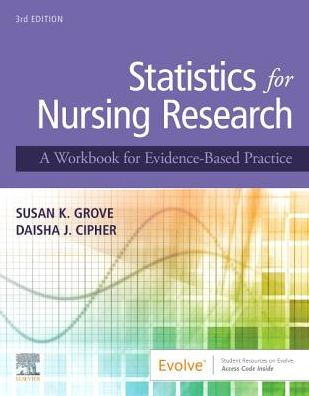5
1
9780323654111


Statistics for Nursing Research: A Workbook for Evidence-Based Practice / Edition 3 available in Paperback

Statistics for Nursing Research: A Workbook for Evidence-Based Practice / Edition 3
- ISBN-10:
- 0323654118
- ISBN-13:
- 9780323654111
- Pub. Date:
- 10/03/2019
- Publisher:
- Elsevier Health Sciences
- ISBN-10:
- 0323654118
- ISBN-13:
- 9780323654111
- Pub. Date:
- 10/03/2019
- Publisher:
- Elsevier Health Sciences

Statistics for Nursing Research: A Workbook for Evidence-Based Practice / Edition 3
$65.99
Current price is , Original price is $65.99. You
$65.99
Temporarily Out of Stock Online
65.99
Out Of Stock

Product Details
| ISBN-13: | 9780323654111 |
|---|---|
| Publisher: | Elsevier Health Sciences |
| Publication date: | 10/03/2019 |
| Edition description: | 3rd ed. |
| Pages: | 496 |
| Product dimensions: | 8.50(w) x 10.88(h) x (d) |
What People are Saying About This
From the B&N Reads Blog
